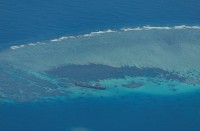(Eagle News) – The Philippine Red Cross (PRC) once again pressed the Department of Health to allow RT-PCR tests for COVID-19 through use of saliva samples, instead of the usual nasopharyngeal swabs, as its officials demonstrated how this was easier, more convenient, less invasive and cheaper.
In a pilot test, PRC chair Senator Richard Gordon showed how it is easier to get saliva samples for RT-PCR tests.
Only one milliliter of saliva is needed for the test. The patient can easily give his saliva samples in a secured tube; the saliva sample is placed in a vial which is then stamped with a barcode for identification.
Those who will be tested should not gargle or smoke at least 30 minutes before the taking of saliva samples.
After three hours, the person tested can already get his test results.
Since October last year, Gordon has been recommending to the DOH the use of the saliva-based RT-PCR test as this has also the same efficacy rate as the nasopharyngeal swab tests.
He said that the health care worker conducting the test do not even need to wear PPEs or personal protective equipment.
“Mas mura dahil hindi ka na gagamit ng PPEs. Very portable yung test, mas marami tayong mga bata na mate-test sa mga eskwela, nasa trabaho, mas madali tayong test doon,” he explained.
Gordon explained this saliva test as a game changer, as more people can be easily tested for COVID-19.. Test results are also received faster which means more positive cases of the population can be detected, isolated and treated.
President Rodrigo Duterte himself had earlier instructed the DOH to look into this saliva test for RT-PCR, but the DOH has yet to release its recommendations on the matter.
Testing czar Vince Dizon had also pressed the DOH to validate the saliva testing method for RT-PCR tests for COVID-19.
The nasopharyngeal is done while the patient to be tested is sitting upright. A swab is inserted into the patient’s nose until it reaches the nasopharynx, at which point the swab “is rotated gently and completes two complete 360-degree rotations to allow the secretions from this area to be absorbed,” according to an article by news.medical,net explaining how the nasopharyngeal swab is done.
Because of this, patients experience some degree of discomfort.
In contrast, saliva-based testing is easier, and patients can even collect their own samples with minimal discomfort by simply spitting into a sterile tube.
(Eagle News Service)







